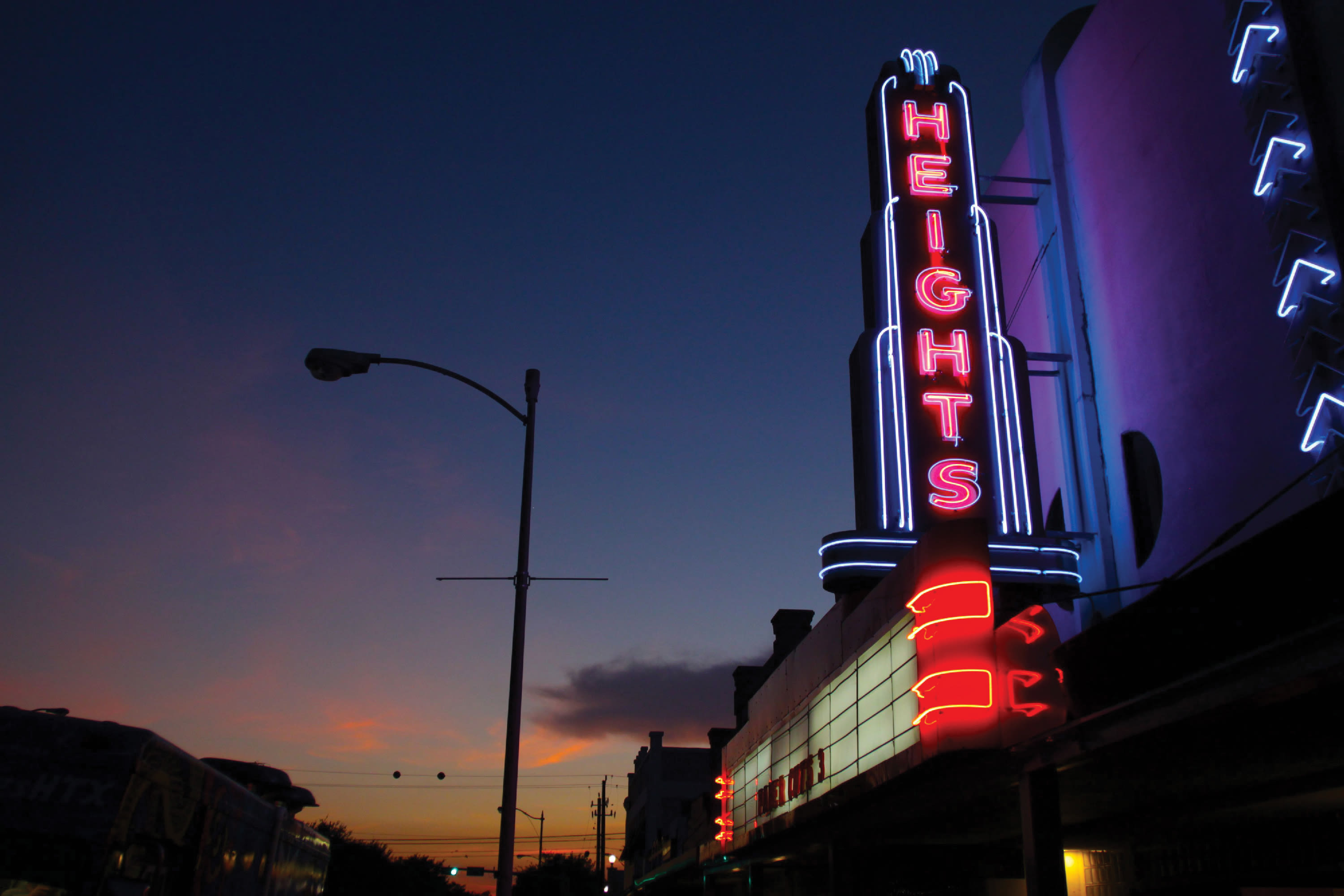The Top 7 Spots to Live: 2020 and Beyond

Downtown
Image: Dan Joyce
Downtown
Population: 12,000
Walk Score: 76/100
What it has going for it: Downtown is one of the only truly walkable neighborhoods in Houston, with easy access to Buffalo Bayou, Discovery Green, Market Square Park, and a laundry list of cultural institutions. “We’re seeing pretty constant demand for downtown properties from people wanting to have the kind of accessibility that downtown provides,” Martin says.
What’s on the horizon: There’s a massive amount of multifamily construction underway downtown, thanks to a city tax incentive that gives developers credit for erecting apartment towers here. With 2,899 current units, 2,700 underway and another 2,500 planned, the number of downtown residents could triple in the next few years. “I think it’s going to end up looking like Westheimer on the weekends,” says Martin, “with people on patios with their dogs.”
Estimated date of arrival: 2020, by which time the current slate of apartment projects should be done.
What would seal the deal: Retail, something the neighborhood is currently light on. But developers and city planners hope that with the bump in new residents, a big-box grocery store, independent boutiques, and a wider array of bars and eateries will follow.
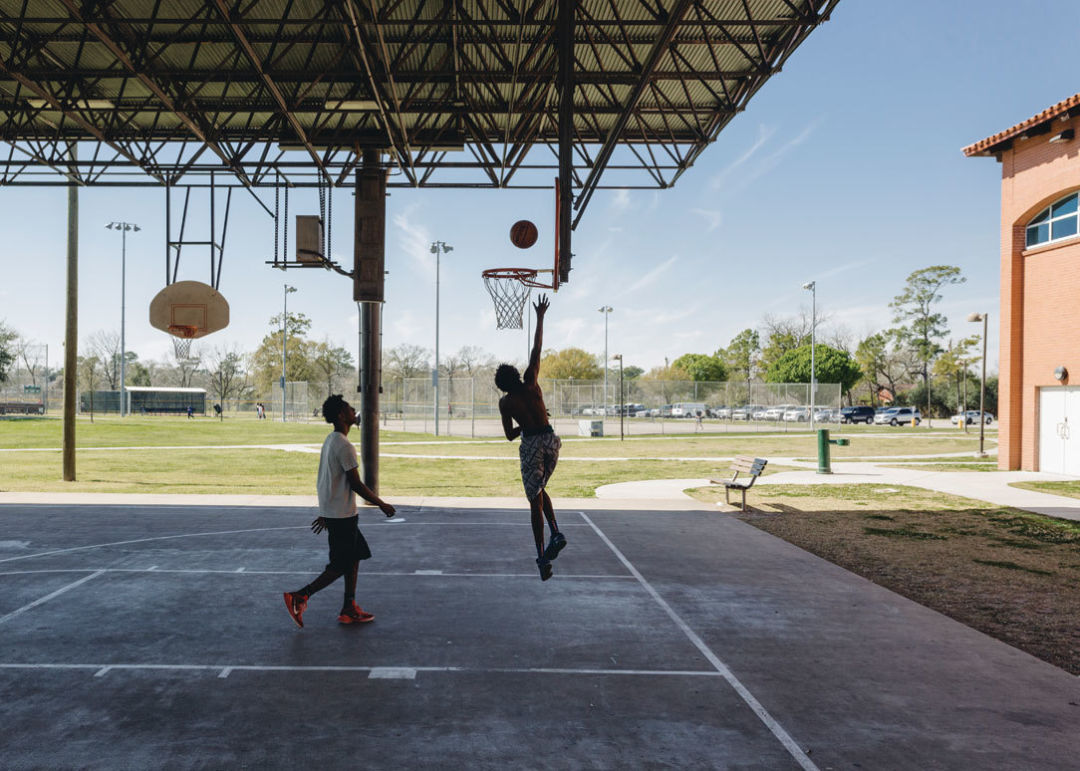
Moody Park
Image: Max Burkhalter
Northside
Population: 32,000
Walk Score: 62/100
What’s on the horizon: The much-anticipated White Oak Music Hall is expected to be transformative for the Near Northside, the historic area closest to downtown where people have lived since the development of the Hardy Rail Yards in the 1880s. The railyards themselves, a long-vacant brownfield site, are being cleaned up and redeveloped into 350 apartments, half of which will be designated for low-income tenants. The management district hopes these projects will attract a wider array of retailers and new residents to the area.
What it has going for it: Much of the Northside is just a hop over I-45 from the coveted Heights, where home prices have squeezed out many would-be buyers. The single-family homes of Lindale Park and Northside Village are largely in good shape, and much more affordable than their neighbors to the west. A new light rail along Fulton Street will take residents from the Northline Commons retail center down to the UH Downtown campus, something urban planners think will spur more high-density residential projects in the coming decades.
Estimated date of arrival: 2026; many experts say it’s not if, but when the area will be densified and redeveloped, but with low oil prices causing developers to steer clear of new projects, the timeline is longer than expected.
What would seal the deal: A big question mark is the I-45 expansion plan that would widen the freeway from 610 to I-10 on the east side, taking right-of-way from sites in Northside. There are also plans to sink the freeway from Cavalcade to I-10 and build more walkable connections—even, potentially, park space—atop I-45. If these changes come to pass, expect a longer timeline.
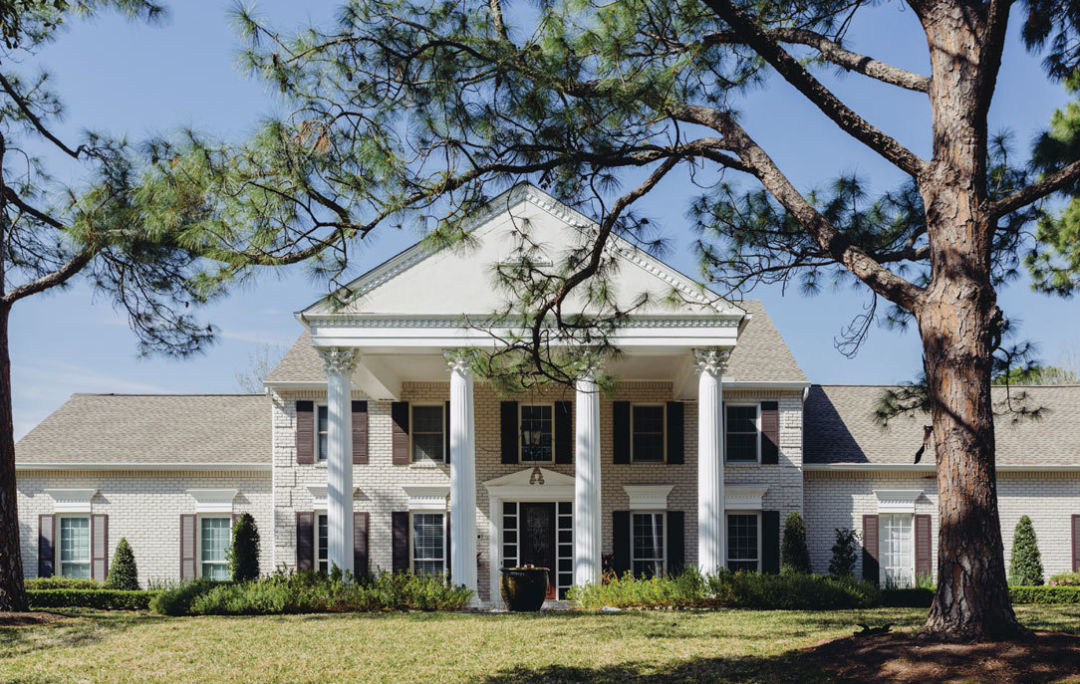
Image: Max Burkhalter
Energy Corridor
Population: 53,000
Walk Score: 43/100
What it has going for it: The Energy Corridor is a bustling economic engine for the city of Houston, home to many of the city’s largest energy employers, including BP, ConocoPhillips and Shell. But the area’s management district has been working with developers to make it known as much for its livability as its big-name office tenants. With the oil crash causing huge layoffs just as multiple large office buildings finish construction, the area has a few years of digging-out ahead, but the slump has given community leaders the ability to focus more on quality of life. First up is the addition of lots of multifamily spaces: Martinson says 3,500 apartment units are either underway or were completed here over the past year.
What’s on the horizon: Because much of the Energy Corridor is truly that—a corridor, bordered by Addicks reservoir on one side and George Bush and Terry Hershey Park on the other—the area has long struggled with traffic, particularly at rush hour. The district’s 10-year master plan places a heavy emphasis on lessening congestion. A shuttle system will connect to nearby communities like Cinco Ranch and make drop-offs at all the major employers on both sides of I-10. And the 35-acre former ExxonMobil Chemical site will soon be transformed into a massive mixed-use development with apartments, retail, hotel and office space, all interconnected with the shuttles, bike lanes and pedestrian trails connecting the 3-million-square-foot development to the adjacent Terry Hershey Park.
Estimated date of arrival: 2026.
What would seal the deal: These plans are great, but with oil prices in the gutter, it remains to be seen whether they'll actually come to pass. If they do, expect a substantially transformed Energy Corridor in the decades to come.
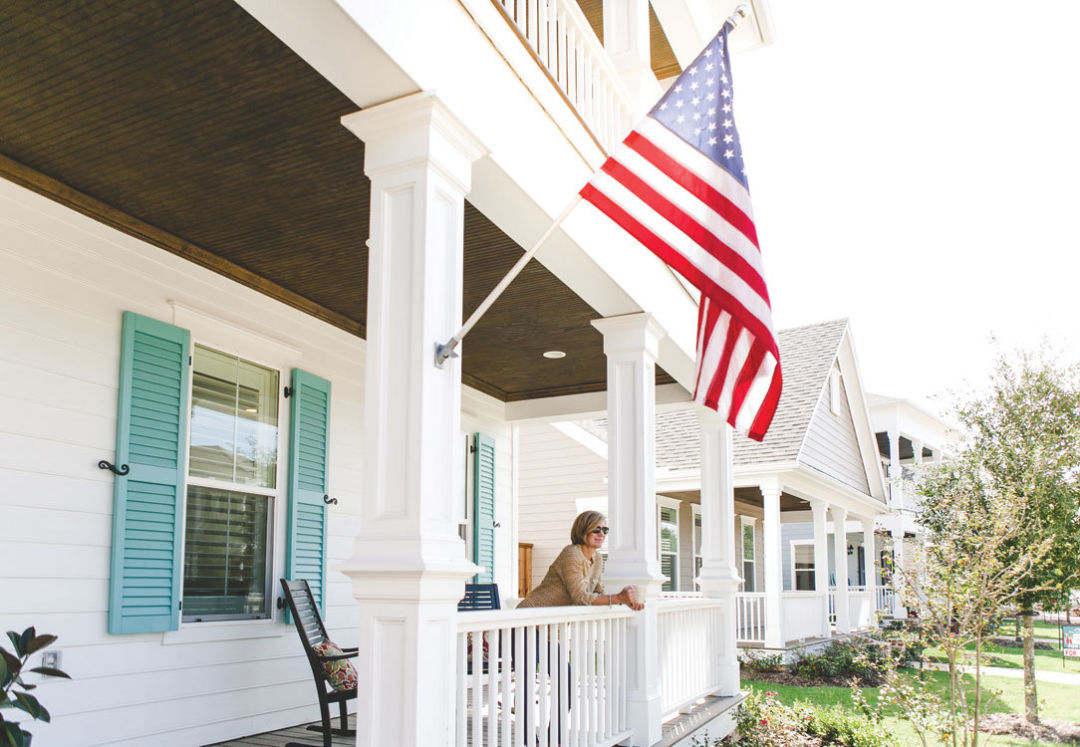
Springwoods Village
Image: Max Burkhalter
Springwoods Village
Population: 500
Walk Score: 6/100
What it has going for it: Springwoods Village is a brand-spanking-new master-planned community, with Exxon’s recently opened, futuristic, 385-acre campus as its center. These 2,000 undeveloped acres in north Houston just south of The Woodlands were purchased in 1961, but Coventry Development Corp. waited more than 50 years to develop them until a couple of Houston’s marquee employers came onboard—in addition to Exxon, Southwestern Energy’s campus is also located here. The community is dedicated to environmentally sustainable development, which means buildings that meet stringent LEED standards, LED streetlights, and an eco-friendly storm-water catchment system that employs solar panels to offset its energy use.
What’s on the horizon: A Kroger is set to open at the Holzwarth Road exit off Grand Parkway next year; developers are hard at work on CityPlace, a 60-acre town square of sorts boasting office, hotel and retail space to be located between the Exxon and Southwestern campuses; and it’s full-steam ahead on residential development. The community now boasts more than 10,000 jobs but only 500 residents, a number that will steadily grow—but not all at once. Keith Simon, executive vice president at Coventry, says the master plan includes room for up to 5,000 homes and apartments, which will pop up at a measured pace over the next 15 or 20 years. “We prefer to take our time,” Simon says, “because we think the end result is better.”
Estimated date of arrival: 2036, by which time Simon expects all 2,000 acres to be developed.
What would seal the deal: Public transit, something The Woodlands lacks.
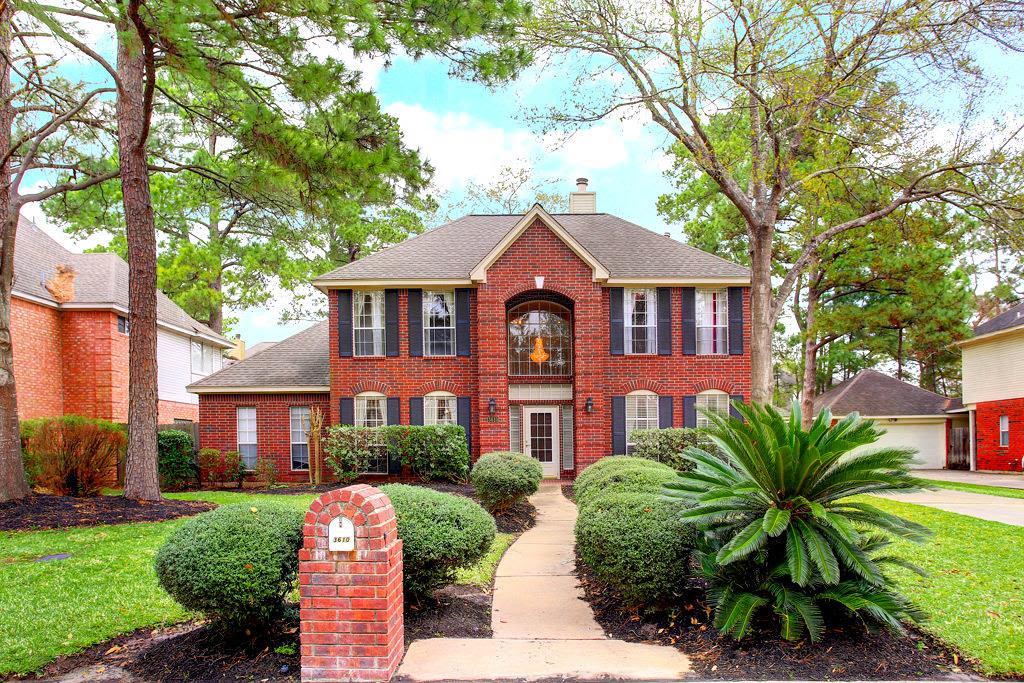
Image: HAR.com
Antoine Corridor
Population: 28,000
Walk Score: 44/100
What it has going for it: The area is chock-full of good housing stock that Houstonians are finally beginning to notice. “We’re getting a lot of new residents—they’re priced out of the Heights and Garden Oaks and Oak Forest, so we’re the next step,” Norden says. “There’s a large number of 25- to 35-year-olds moving in, some with families, some without, who are recognizing the value of the area.” The corridor is nestled on the north side of Highway 290, outside 610, which makes the location ideal for folks who can’t afford the Inner Loop but want easy access to it.
What’s on the horizon: Antoine Drive is getting a makeover in the next couple of years, adding wider sidewalks and bike lanes to bolster what Norden says is an active cycling community. Plans are underway to enhance White Oak Bayou and Vogel Creek, including adding waterside trails and green space. The management district is also working on attracting developers to the area’s aging and underwhelming retail centers, and bringing in more local retailers like coffee houses and bike repair shops. “We’re a great community for mom-and-pops, with reasonably priced rents and very flexible management companies that want to bring that kind of business here,” Norden says.
Estimated date of arrival: 2024, by which time improvements to Antoine Drive and construction on 290 should be complete.
What would seal the deal: The main challenge to the Antoine Corridor’s future, Norden says, is its past. “People still refer to our area as not the right place to be,” he says. “That’s okay, because we’re getting the explorers and the people that want to be first in line. So there are great values, and people are taking advantage of that.”
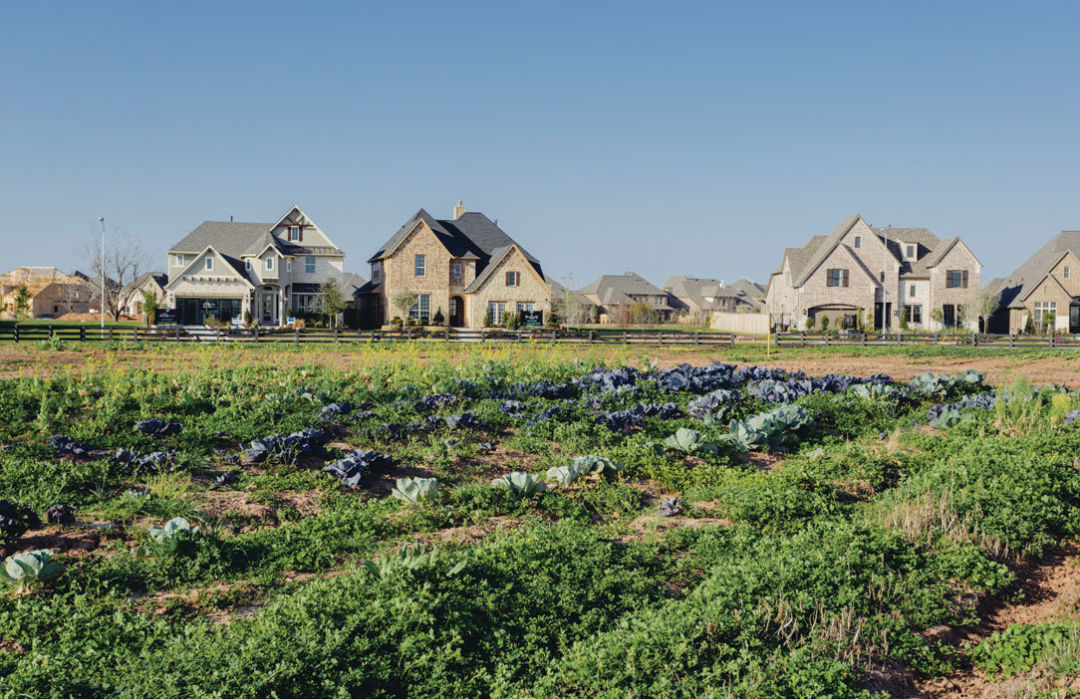
Image: Max Burkhalter
Fort Bend County
Population: 627,000
Walk Score: 27/100
What it has going for it: The county occupies a whopping 885 square miles, which includes the bustling city of Sugar Land as well as Richmond, Rosenberg, Missouri City and even parts of Katy and Pearland—all of which are rapidly growing. With the world’s largest oilfield services company, Schlumberger, announcing its imminent move from Uptown to Sugar Land, where it owns a 200-acre campus, the area is grabbing more and more attention.
What’s on the horizon: The historic buildings that were formerly home to Imperial Sugar Company’s refinery are getting a makeover as a mixed-use destination—the repurposed buildings will include high-end shopping and dining, along with an Aloft Hotel and an Alamo Drafthouse. When the project’s complete next spring, you’ll be able to catch a trolley from nearby neighborhoods to a Sugar Land Skeeters game or to work at Nalco Champion, a major employer in the area. Sugar Land is also getting a $74.3 million amphitheater, the city’s answer to The Woodlands’ Cynthia Mitchell Woods Pavilion, which will accommodate up to 6,400 concert-goers when it’s done this fall. Meanwhile, off the Grand Parkway in nearby Richmond, a new kind of master-planned community, the “agrihood” known as Harvest Green, is rethinking the suburban lifestyle, with a working farm as the centerpiece and residential garden plots and fruit trees as amenities.
Estimated date of arrival: 2018 and beyond.
What would seal the deal: Fort Bend County residents seem to be struggling with traffic more than their neighbors in Harris and Montgomery counties—over 40 percent of respondents to Kinder Institute’s Houston Area Survey named traffic as the biggest problem facing the area today, compared with about 28 percent in the other two counties. And 45 percent of Fort Bend residents say improving public transit is the best solution.
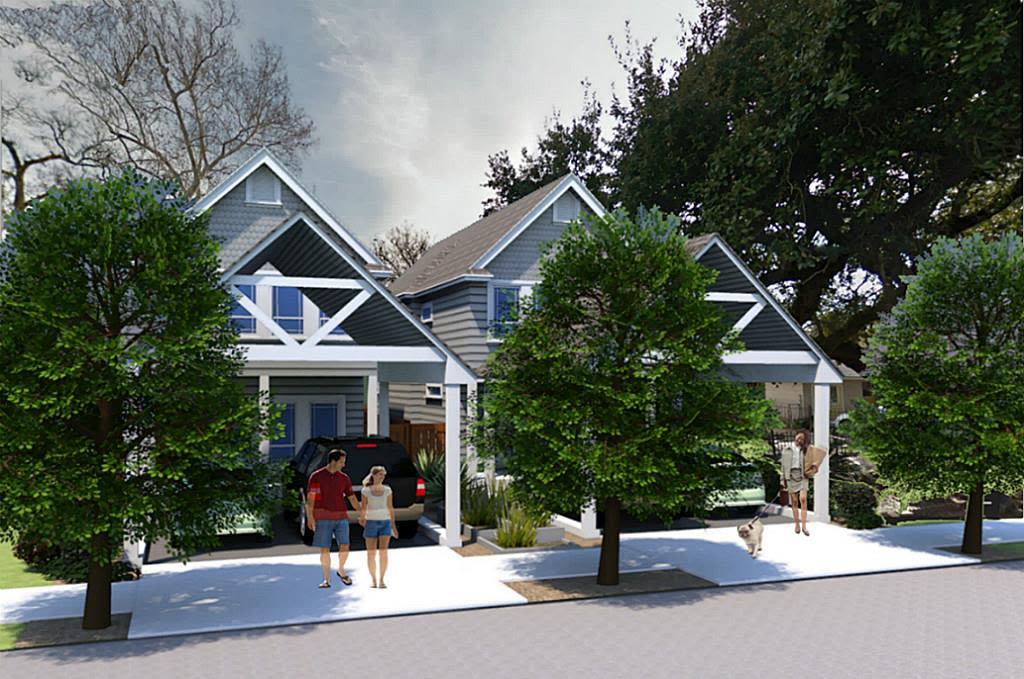
Image: Green Trail Builders
Independence Heights
Population: 14,000
Walk Score: 47/100
What it has going for it: The neighborhood—wedged in between Garden Oaks and I-45, with much of the area designated as historic—has a rich past. Built by and for African-Americans, it became the first black incorporated city in Texas in 1915. The mission of the Independence Heights Redevelopment Council is to redevelop blighted areas, including beyond-repair homes, while preserving history—and keeping residents. “The main thing we’re working on is getting the homes upgraded and restored, but also bringing in new people to the neighborhood without displacing the ones that are there,” Debose says. “We feel like we’re getting there, and not that many communities have been able to do that.”
What’s on the horizon: The neighborhood was one of four zones former Mayor Annise Parker targeted to split $151 million in funding for rebuilding and repairing homes damaged by Hurricane Ike; it’s being used to construct homes for seniors as well as new, mostly affordable, housing. Neighborhood schools are also getting much-needed attention—HISD will soon break ground on the new Booker T. Washington High School. A study done by Houston-Galveston Area Council identified the corner of North Main and Crosstimbers as the perfect spot for a mixed-use neighborhood anchor, with multifamily, retail and services the neighborhood currently lacks, like a library. Debose says the project, which is being developed by the Houston Housing Authority, will be a catalyst for revitalization.
Estimated date of arrival: 2026.
What would seal the deal: Getting a handle on crime, something Debose admits the neighborhood struggles with. Also, the neighborhood still lacks solid infrastructure, with few sidewalks and badly paved roads. An upgrade of those basics, plus some denser mixed-use centers, would draw more people in the community out, adding to the area’s already vibrant street life.






